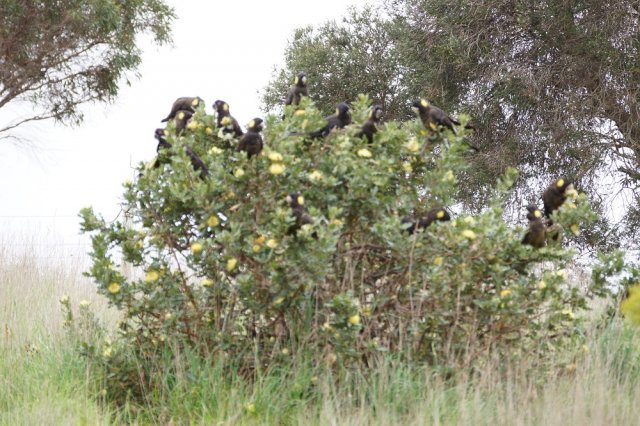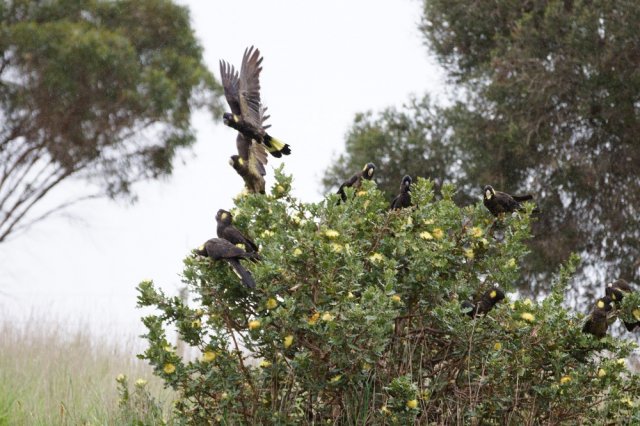A flock of Yellow-tailed Black Cockatoos does the rounds of the neighbourhood here on the s.e. slopes of the Mt Lofty Ranges SA. When they arrive each year it's usually at first in a flock of around 25 - 30. After a few appearances these numbers dwindle to about 3 - 9 or 10 until they stop coming in about early February. They crank up in larger numbers again in about July.
| Term and Conditions | Privacy Statement | Web Support by Gaia Resources Hosted by Serversaurus |  |











What plant are they feeding on, Woko? Looks Proteaceous...
Proteaceous it is, zosterops. It's Dryandra quercifolia from the south coast of WA. I planted a few among some Banskias with the aim of producing cut flowers to supplement my meagre government income at the time.
Woko, planting non-indigenous vegetation?? could it be?
It looks healthy, I wish they grew that well over here.
Dryandra (incidentally I think they've been included in Banksia for quite some time now...) was my first thought but i thought it was out of range for you. Interestingly it seems D. quercifolia is now called Banksia heliantha (when they moved Dryandra to Banksia the name of this species was changed as there already was a Banksia quercifolia!).
http://anpsa.org.au/d-que.html
That plant is getting a big thumbs up from the YTB Cockatoos.
Very nice photo with the yellows of the Cockatoos matching those flowers perfectly.
Yes, shame on me, zosterops. Something I did in my impetuous youth. But I've left the plant there as I'm waiting for the local Hakeas I've planted to provide food for the Yellow-tailed Black Cockatoos.
I did notice recently that a couple of Dryandra species had been moved to the Banksia genus but I didn't know they all had been.
Yes, Whistling Duck, their yellow cheek patches do provide a degree of camouflage.
Lovely photos! Thank you for sharing.
And yep when we know better, we do better in our gardens.
I have three naturally occurring hakea on our property and when I get around to it I want to propagate some seeds and plant more.
Happy Birding!
https://www.flickr.com/photos/138588528@N02/